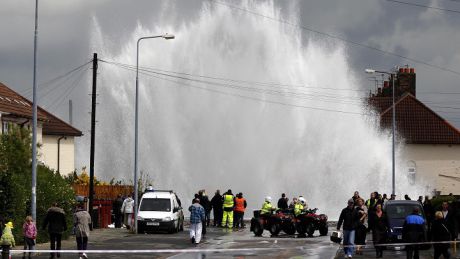
Better efficiency means increased productivity. However, water can be a bit of a slippery customer. It has a tendency to go where it wants, resulting in water loss. The outcome is a range of inefficiencies, many of which can be deeply frustrating. If you’re concerned about losing water from your water treatment plant, read on.
What Is Water Loss?
There are two main types of water loss. The first is ‘apparent loss’. This refers to metrical inaccuracies that give false readings regarding water usage. Antiquated systems, data errors, and poor servicing are the primary culprits for apparent loss. The second type of water loss is ‘real loss’.
This means water that is lost due to leakage or overflows. Most companies are more concerned about real loss, because escaped water can be highly damaging to equipment, buildings, and land. If the lost water has already been treated, it also represents a waste of investment.
Why Should I Be Interested In Reducing Water Loss?
Water loss is expensive business. Over three billion litres are lost across the UK every day, and Ofwat – the economic regulator of the water sector in England and Wales – is a powerful taskmaster when it comes to taking action against companies. Aside from being a financial drain, water loss from treatment plants can be costly in other ways.
With climate change and the global food crisis now becoming very hot topics, reducing water wastage and increasing corporate sustainability is likely to become even more heavily regulated. Corporate Social Responsibility (CSR) influences brand identity, and therefore getting the ecological footprint wrong can result in a long-lasting PR dent and the loss of contracts. Prevention is always better than a cure, so minimising wastage has a wide range of long-term cost benefits.
How Can I Control Apparent Losses?
Meters and software systems need to be regularly serviced. Meters are notoriously prone to losing accuracy, and many water treatment companies forget this invisible – yet expensive – issue. When combined with out-of-date data handling methods, the result can be a very misleading picture.
Data-handling issues tend to have their roots in human error, but legacy software can also be culpable. However, when measurement is articulated as a priority and is fully risk-assessed, apparent losses are minimised. This helps with strategic planning, and prevents unnecessary criticism from Ofwat.
How Can I Control Real Losses?
Real losses tend to escape unnoticed until the situation reaches a critical point. This potentially deadly eventuality was captured on CCTV in 2017. The video shows a woman walking calmly down a street moments before the tarmac erupts like a liquid volcano, with surrounding roads quickly turning into rivers. Thankfully, leakage management is a very dynamic area of academic research, so solutions are becoming available. These begin with having the right equipment in place and keeping it serviced. This means sourcing reliable parts, and using pre-emptive maintenance. This can be combined with prioritising speedy repairs, which prevents any issue from getting out of hand.
Sonar testing can be used to monitor the condition of underground pipes, whilst pressure management is important for preventing explosive pipe bursts. Controlling pressure can also limit unnecessary wear and tear on joints and valves, so is a good way of prolonging the health of a system and reducing downtime.
From financial reasons to CSR, every company requires water efficiency. For more information, please don’t hesitate to get in touch.
Image source: emergencyplumber.uk.com










 We are a specialist independent company involved in water purification and water treatment technologies
We are a specialist independent company involved in water purification and water treatment technologies


